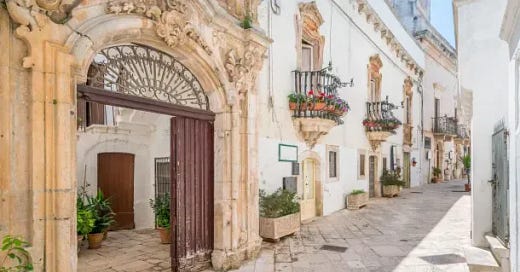Puglia
Folklore traditions, ancient histories, and wild landscapes in the heel of Italy's boot.
I’m writing here about some extraordinary travel and adventure that happened in early October. This newsletter is likely changing over the next year as I begin to write about the themes related to my two upcoming books—a nonfiction book on historical and present day racial violence and a novel about genocide and its generational impact upon a body and a…
Keep reading with a 7-day free trial
Subscribe to Wanderland to keep reading this post and get 7 days of free access to the full post archives.



